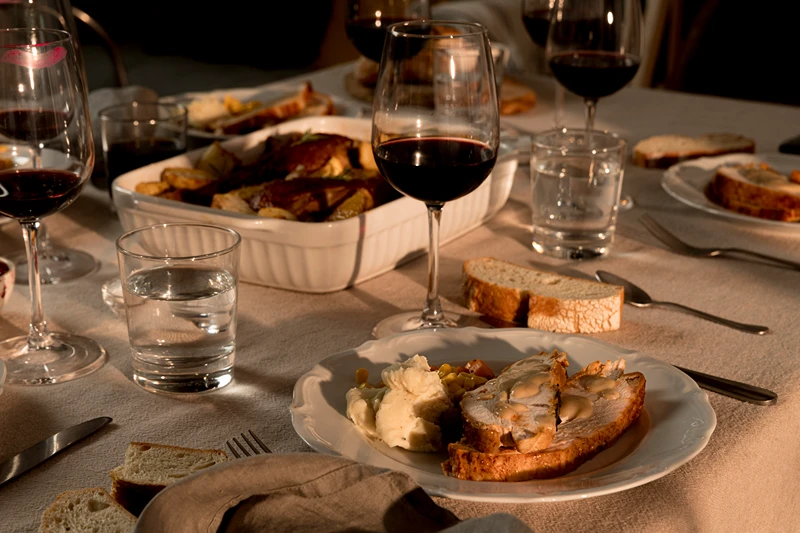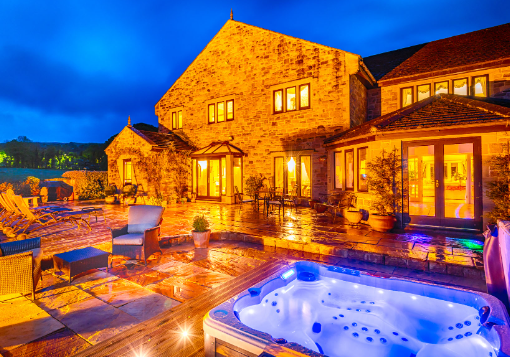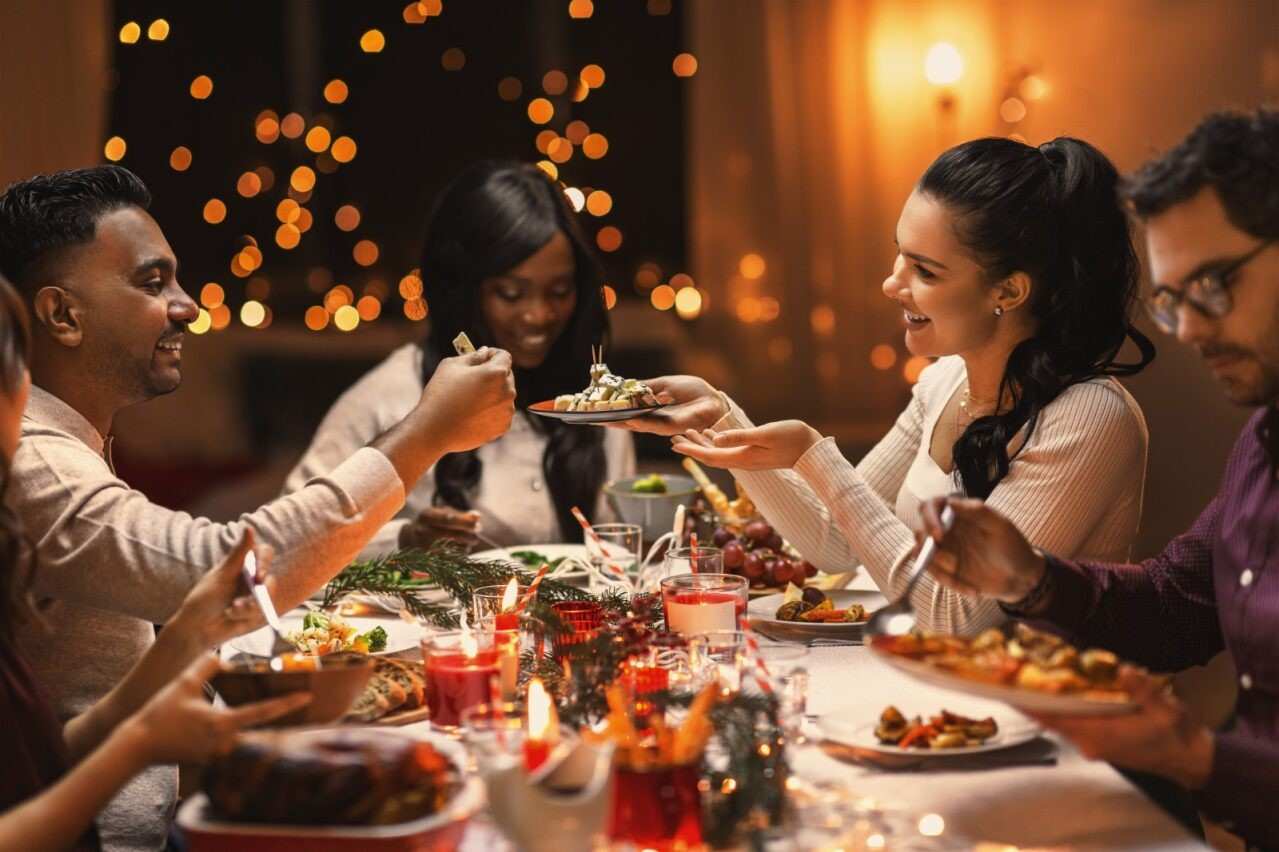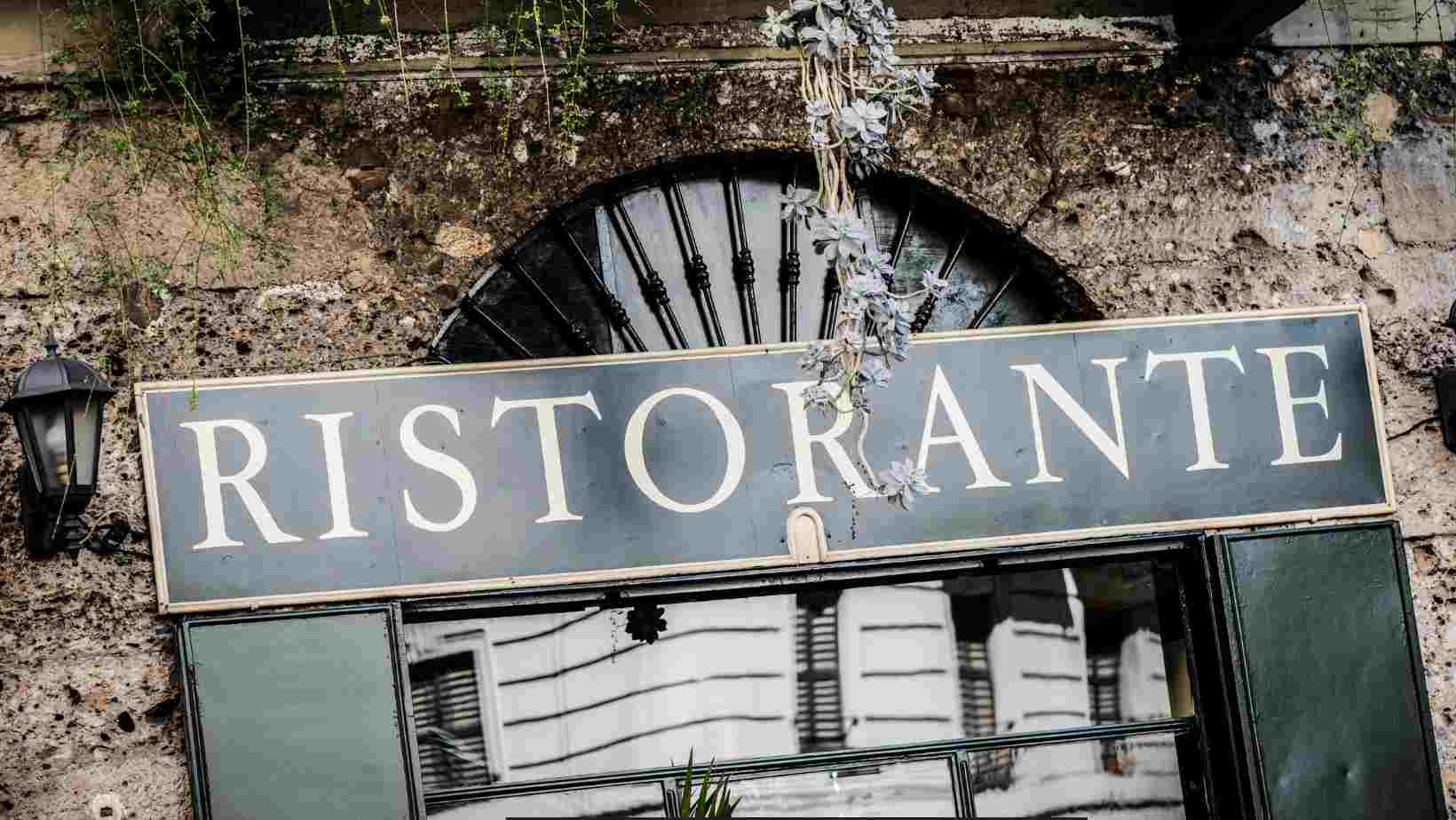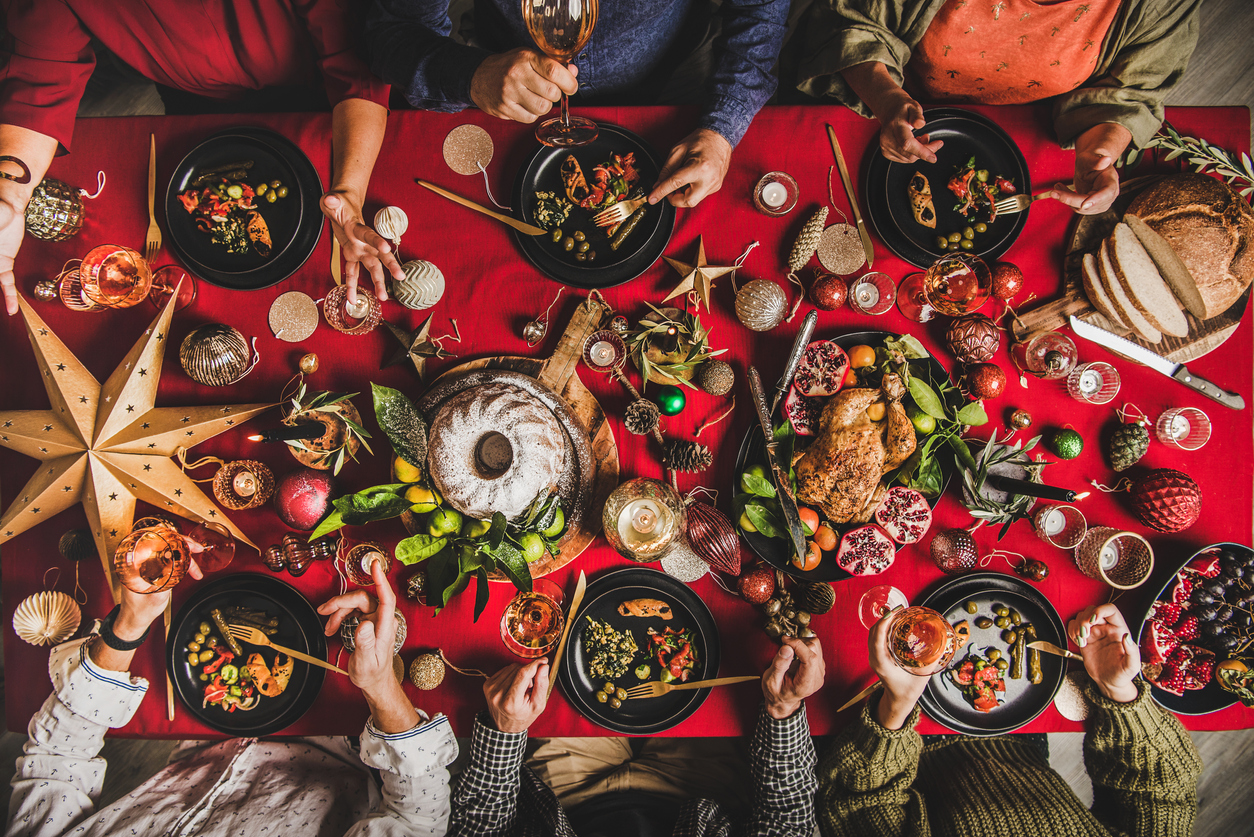Step-by-Step Guide to Hosting a Roman Dinner Party at Home
How to Organise an Unforgettable Ancient Roman Dinner Party at Home?
Creating an unforgettable Roman-themed dinner party at home can engage your guests and bring ancient traditions to life. Thoughtful planning, from decor to dining customs, can ensure an immersive experience for your guests.
Setting the Scene for A Roman Dinner Party
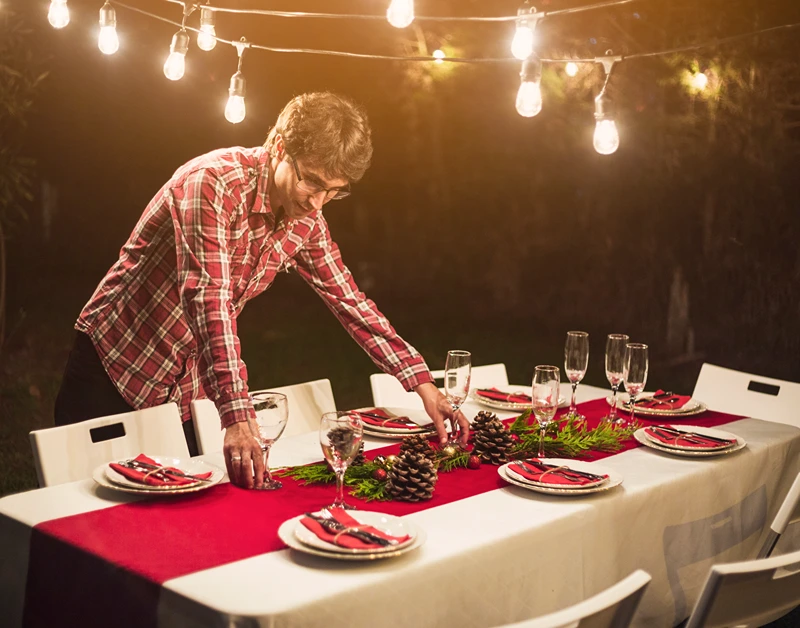
You can set the stage for your Roman dinner party by starting with a Roman dinner party invitation. Use elegant parchment-style paper and incorporate Roman motifs, like laurel wreaths or columns, to spark excitement and hint at the culinary journey ahead.
For décor, embrace earthy tones like terracotta, deep reds, and gold accents. You might want to use oil lamps, candles or string lights to create a warm, lively glow reminiscent of ancient Roman feasts. Adding greenery, such as ivy or laurel garlands, will enhance the ambience, while bronze or ceramic dishes will help transport your guests to another era.
When it comes to seating, you can invite guests to recline on low couches or cushions, following the traditional Roman style. If that’s impractical, a cosy seating arrangement with comfortable chairs will still encourage relaxation and conversation.
Lastly, don’t overlook the music! Soft, instrumental melodies featuring flutes and lyres can immerse everyone in the atmosphere. Keeping the volume low will allow for easy conversation while enhancing the overall dining experience.
Create the Perfect Roman Dinner Party Menu
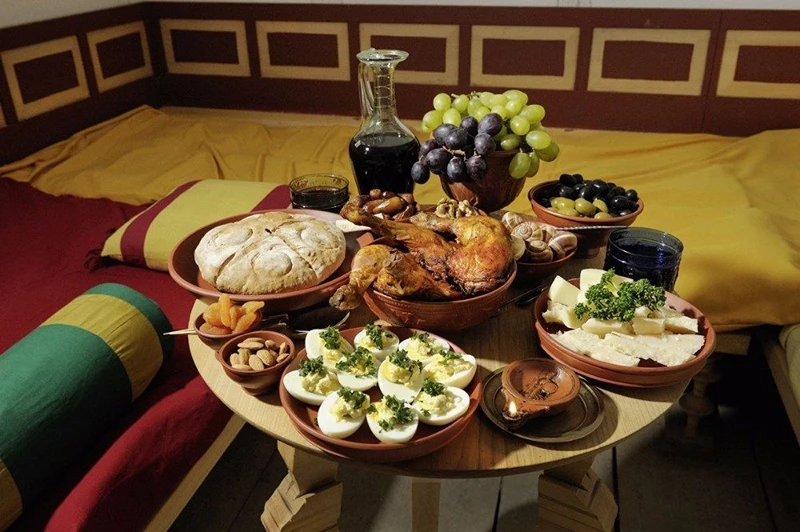
When planning your Roman dinner party menu, focus on the key elements of ancient Roman cuisine. Here are some options for starters, main course, side dishes, and desserts.
Starters:
- Non-Vegetarian: Marinated olives, cheese platters featuring pecorino, cured meats like prosciutto and salami, and stuffed grape leaves with lamb.
- Vegetarian: Grilled vegetables drizzled with balsamic glaze, caprese salad with fresh mozzarella, tomatoes, basil, and frittata with seasonal vegetables.
- Vegan: Roasted red pepper and walnut dip (Muhammara), hummus with pita and assorted veggies, and marinated artichoke hearts.
Main Course:
- Non-Vegetarian: Roasted lamb seasoned with garlic and herbs, slow-cooked pulled pork, and grilled fish seasoned with lemon and herbs.
- Vegetarian: Eggplant parmesan layered with fresh herbs, marinara sauce, creamy mushroom risotto, and stuffed bell peppers with rice and cheese.
- Vegan: Stuffed bell peppers with quinoa and black beans, chickpea and spinach stew, and pasta primavera with seasonal vegetables.
Side Dishes:
- Non-Vegetarian: Honey-glazed carrots with bacon, sautéed greens with pancetta, and lentil salad with anchovies.
- Vegetarian: Creamy polenta topped with sautéed mushrooms, roasted Brussels sprouts with balsamic reduction, and braised greens in olive oil and garlic.
- Vegan: Mediterranean chickpea salad with cucumbers and tomatoes, roasted sweet potatoes seasoned with herbs, and a hearty farro salad with roasted vegetables.
Desserts:
- Vegetarian: Ricotta cheesecake topped with seasonal fruit, honey cakes, and fruit tarts with pastry cream.
- Vegan: Almond cookies, a refreshing sorbet made with local fruits, and baked apples with cinnamon and nuts.
Incorporating these into your Roman dinner party food will create an immersive dining experience that takes you and your guests to ancient Rome.
Ideal Drink Pairings for Your Dinner

As you plan your Roman dinner party menu, consider how drinks can elevate your dining experience.
- Classic: A classic Italian red like Chianti is a great option, especially with roasted meats; it perfectly balances rich flavours.
- Seafood: For seafood dishes, a crisp Pinot Grigio or Verdicchio enhances the lighter fare, providing a refreshing contrast that compliments the meal.
- Traditional Option: You can include traditional options like mulled wine (vin brulé), a favourite in ancient Rome, infused with spices like cinnamon, cloves, and citrus for a cosy touch that warms the soul.
- Non-Alcoholic Option: For non-alcoholic choices, consider sparkling water with fresh herbs and lemon, which cleanses the palate and refreshes everyone.
- Lively Option: To kick off the evening on a lively note, serve herbal infusions or a sprightly aperitif like Aperol Spritz.
Roman Dining Etiquette and Table Customs

Consider these pointers to enhance your Roman dinner party experience.
- Arrange Reclining Couches: You can set up reclining couches, which foster the relaxed, communal atmosphere typical of Roman dining.
- Provide Napkins or Hand-Washing Bowls: Since Romans ate most of their food by hand, consider providing napkins or hand-washing bowls to keep things clean between courses.
- Include a Symbolic Offering: You might want to include a symbolic offering to the gods before the meal. Romans often presented small portions of food or wine to household deities (Lares) as a gesture of gratitude, adding a meaningful touch to your gathering.
- Serve Meals in Stages: Meals were traditionally served in stages. You can start with appetisers, followed by the main course, and end with dessert.
- Encourage Family-Style Dining: By sharing dishes family-style, you’ll capture the communal spirit of Roman dining, providing your guests with a truly memorable experience.
Simplify Your Roman Dinner Party Planning
Hosting a Roman dinner party comes with its challenges, especially when cooking for a large group. The stress of preparing multiple traditional dishes can be overwhelming, leaving you drained before the celebration even begins. This pressure can take away from the fun and make it difficult to enjoy time with your guests.
Whether you're hosting a special celebration dinner, looking for a chef during your holiday or weekly meal prep, we will match you to the perfect chefs.
Start hereSo why not make things simpler by hiring a private chef?
A private chef can tackle these challenges by crafting a bespoke menu showcasing authentic Roman cuisine, sourcing only the finest ingredients, and applying expert cooking techniques to ensure every dish is a true delight.
This becomes easier with platforms like Yhangry. They offer a diverse pool of expert professionals like Chef Thomas, who has over 15 years of Michelin experience, and Chef Christian, who has cooked for stars like Madonna and David Beckham. With a very user-friendly platform and flexible cancellation policies, hiring a chef has never been more convenient.
- What are some fun activities to include in an ancient Roman dinner party?
-
Incorporate engaging activities like Roman trivia games, storytelling about ancient myths, or a fun wine tasting featuring classic Italian wines. You could also organise a toga contest, encouraging guests to dress in Roman attire for a more immersive and festive atmosphere.
- What is the ideal number of courses for a Roman dinner party?
-
An ideal Roman dinner party typically features three to five courses, including antipasti (starters), primi (first course), secondi (main course), contorni (side dishes), and dolci (desserts). To ensure an authentic dining experience, book a private chef who can expertly craft this menu for you.
- What details should be included in a Roman dinner party invitation?
-
An authentic ancient Roman dinner party invitation can feature classical Latin phrases and vintage fonts. Including visuals like Roman columns or laurel wreaths will enhance the historical theme, making your invitation eye-catching and relevant to the occasion.
